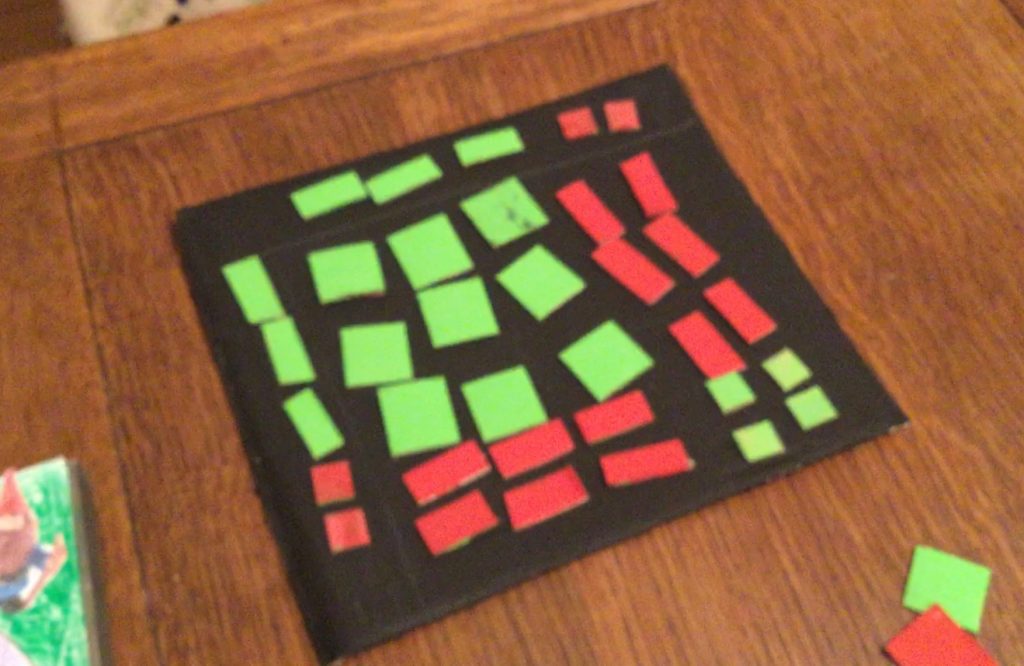The latest unit in math was on Algebra. The project for this unit was to find a partner and create a fun and interesting board game that uses algebra tiles to show how numbers and variables can be represented to demonstrate algebraic operations. The game had to expand, factor and complete the square for polynomial expressions. I asked Kyle to be my partner for this project and we started by brainstorming ideas.
We looked at the criteria that Mr. Gross gave us in the iTunes U course and thought about how to make a great game that could incorporate all of the design criteria. It had to have rules, clear instructions, victory conditions and game pieces that were identifiable. We also had to videotape us playing the game once it was done.
We thought that we would create a board game similar to Candyland. If you don’t know what Candyland is, I can explain that. Candyland is a board game where you move your character along a long path that swerves around the board. We thought that we would also incorporate the approach of the game Snakes and Ladders into our game. Every so often there would be a alternate path that would give you a shortcut to the next row of squares.
There are detailed instructions but generally speaking you start by placing your character on the start square and win by beating your opponent to the finish square. You roll dice to move along. This is where the game introduces algebra tiles. Each square on the board is either purple, yellow, or orange. You roll the dice and whatever coloured square you land on, you pick up the same coloured card. For example, if the square was yellow you would pick up a yellow card and read the algebra tile question to the opposition. The opposition would have to use the algebra tiles provided and solve the question. The game tiles are different sizes to represent the x tiles x squared tiles and the ones tiles. Green was positive and red negative. There is a timer and you have to answer the question before time runs out. We designed our board, game pieces questions and answers. We called it Simon’s Garden of Poly-Gnomials for a play on words for some fun and added a few Gnomes to the game.
Here are the game rules:
This project was a very interesting and informative way to teach someone about a topic such as algebra tiles. There is no better way to teach someone than to have them create a game. They have to figure out the rules, the questions and many other variables. I enjoyed this project and I would recommend it to another class.
Here is a video of Kyle and I playing the game
https://youtu.be/tOhfEEiu5W4


